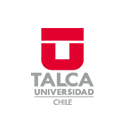
4 results
Search Results
Now showing 1 - 4 of 4
Item Intramolecular Hydrogen Bond in Biologically Active o-Carbonyl HydroquinonesAutores: Martinez-Cifuentes, M.; Weiss-Lopez, BE.; Santos, LS.; Araya-Maturana, R.Intramolecular hydrogen bonds (IHBs) play a central role in the molecular structure, chemical reactivity and interactions of biologically active molecules. Here, we study the IHBs of seven related o-carbonyl hydroquinones and one structurally-related aromatic lactone, some of which have shown anticancer and antioxidant activity. Experimental NMR data were correlated with theoretical calculations at the DFT and ab initio levels. Natural bond orbital (NBO) and molecular electrostatic potential (MEP) calculations were used to study the electronic characteristics of these IHB. As expected, our results show that NBO calculations are better than MEP to describe the strength of the IHBs. NBO energies (Delta E-ij((2))) show that the main contributions to energy stabilization correspond to LP ->sigma* interactions for IHBs, (O1O2)-O-center dot center dot center dot-H-2 and the delocalization LP ->pi* for O-2-C-2 = C-alpha(beta). For the (O1O2)-O-center dot center dot center dot-H-2 interaction, the values of Delta E-ij((2)) can be attributed to the difference in the overlap ability between orbitals i and j (F-ij), instead of the energy difference between them. The large energy for the LP O-2 ->pi* C-2 = C-alpha(beta) interaction in the compounds 9-Hydroxy-5-oxo-4,8, 8-trimethyl-1, 9(8H)-anthracenecarbolactone (VIII) and 9,10-dihydroxy-4,4-dimethylanthracen-1(4H)-one (VII) (55.49 and 60.70 kcal/mol, respectively) when compared with the remaining molecules (all less than 50 kcal/mol), suggests that the IHBs in VIII and VII are strongly resonance assisted.Item Synthesis and in Vitro Cytotoxic Evaluation of Aminoquinones Structurally Related to Marine IsoquinolinequinonesAutores: Delgado, V.; Ibacache, A.; Theoduloz, C.; Valderrama, J.A.The synthesis of 4-methoxycarbonyl-3-methylisoquinolinequinone (1) and a variety of its substitution products with amino-, alkylamino and halogen groups on the quinone nucleus is reported. The series of 6-, 7- and 6,7-subtituted isoquinolinequinones were evaluated in vitro for their cytotoxic activity using the MTT colorimetric method. All the newly synthesized compounds showed moderate to high potency against MRC-5 healthy lung fibroblasts and four human tumor cell lines: AGS gastric adenocarcinoma, SK-MES-1 lung, J82 bladder carcinoma, and HL-60 leukemia cells. Among the series, compounds 4b, 12 and 13 exhibited interesting antitumor activity against human gastric adenocarcinoma, human lung and human bladder carcinoma cancer cells. 7-Amino-6bromoisoquinoline- 5,8-quinone (13) was found to be the most promising active compound against the tested cancer cell lines, with IC50 values in the 0.21-0.49 mu M range, lower than the anti-cancer agent etoposide used as reference.Item The Passiflora tripartita (Banana Passion) Fruit: A Source of Bioactive Flavonoid C-Glycosides Isolated by HSCCC and Characterized by HPLC-DAD-ESI/MS/MSAutores: Simirgiotis, M.J.; Schmeda-Hirschmann, G.; Borquez, J.; Kennelly, E.J.The banana passion fruit (Passiflora tripartita Breiter, Passifloraceae) known as "tumbo" is very appreciated in tropical and subtropical countries of South America. Methanolic extracts from peel and the fruit juice of P. tripartita growing in Chile were analyzed for antioxidant capacity as well as for flavonoid and phenolic content. A chromatographic method was developed for the rapid identification of the main phenolics in the samples by HPLC-DAD and HPLC-MS. The fast fingerprint analysis allowed the detection of eighteen flavonoid C-glycosides and four flavonoid O-glycoside derivatives which were characterized by UV spectra and ESI-MS-MS analysis. Several of the C-glycosides detected are structurally related to the orientin derivative 4'-methoxy-luteolin-8-C-(6 '' acetyl)-beta-D-glucopyranoside (31), fully elucidated by spectroscopic methods. The antioxidant derivative 31 along with schaftoside, vicenin II, orientin and vitexin were isolated from the fruit extract by high-speed countercurrent chromatography (HSCCC). A suitable method for the preparative isolation of flavonol C-glycosides from "tumbo" extracts by HSCCC is reported. The pulp of the fruits showed good antioxidant capacity (12.89 +/- 0.02 mu g/mL in the DPPH assay). The peel presented the highest content of flavonoids (56.03 +/- 4.34 mg quercetin/100 g dry weight) which is related to the highest antioxidant power (10.41 +/- 0.01 mu g/mL in the DPPH assay).Item Dimeric Labdane Diterpenes: Synthesis and Antiproliferative EffectsAutores: Pertino, M.W.; Theoduloz, C.; Bastias, M.; Schmeda-Hirschmann, G.Several diterpenes with the labdane skeleton show biological activity, including antiproliferative effects. Most of the research work on bioactive labdanes has been carried out on naturally occurring diterpenes and semisynthetic derivatives, but much less is known on the effects of diterpene dimers. The aim of the present work was to synthesize dimeric diterpenes from the labdane imbricatolic acid using esters, ethers and the triazole ring as linkers. Some 18 new derivatives were prepared and the compounds were evaluated for antiproliferative activity on human normal fibroblasts (MRC-5) and the following human tumor cell lines: AGS, SK-MES-1, J82 and HL-60. The diethers 8-10, differing in the number of CH2 units in the linker, presented better antiproliferative activity with a maximum effect for the derivative 9. The best antiproliferative effect against HL-60 cells was found for compounds 3 and 17, with IC50 values of 22.3 and 23.2 mu M, lower than that found for the reference compound etoposide (2.23 mu M). The compounds 9, 17 and 11 were the most active derivatives towards AGS cells with IC50 values of 17.8, 23.4 and 26.1 mu M. A free carboxylic acid function seems relevant for the effect as several of the compounds showed less antiproliferative effect after methylation

